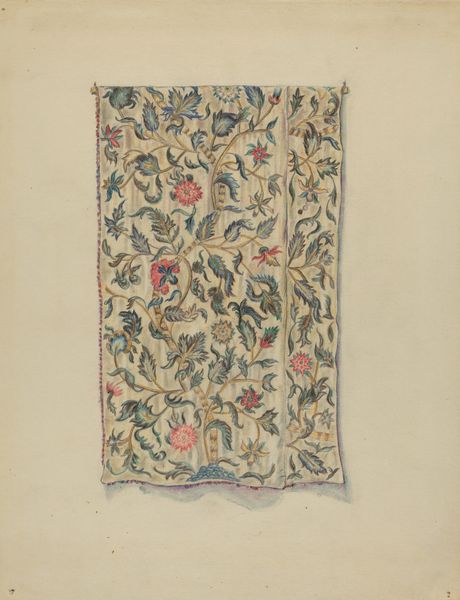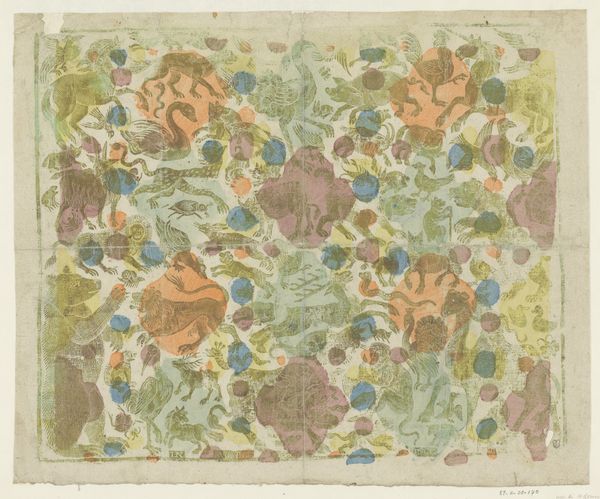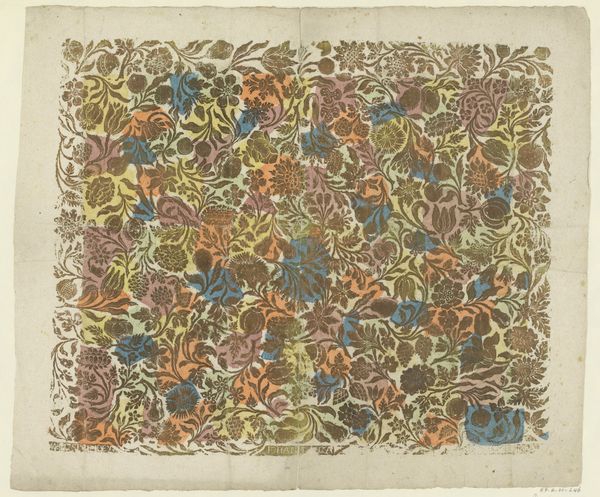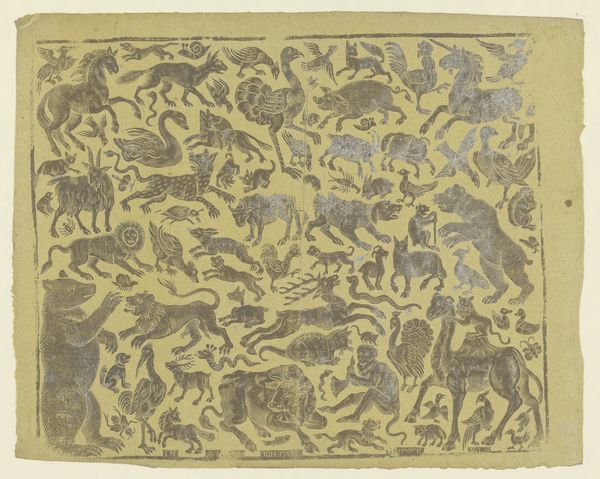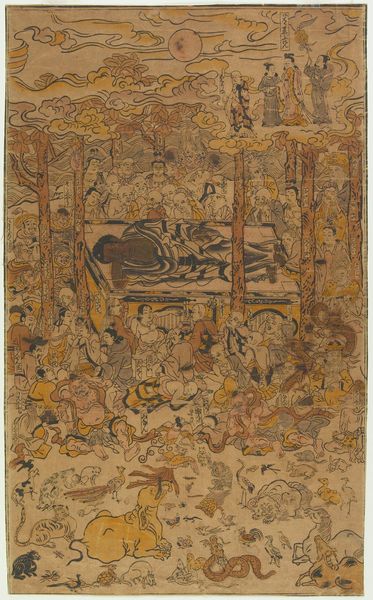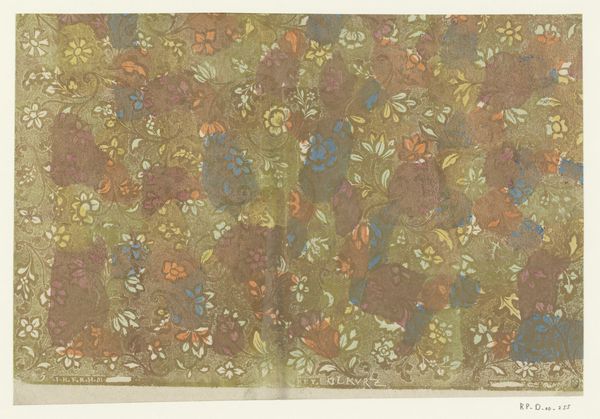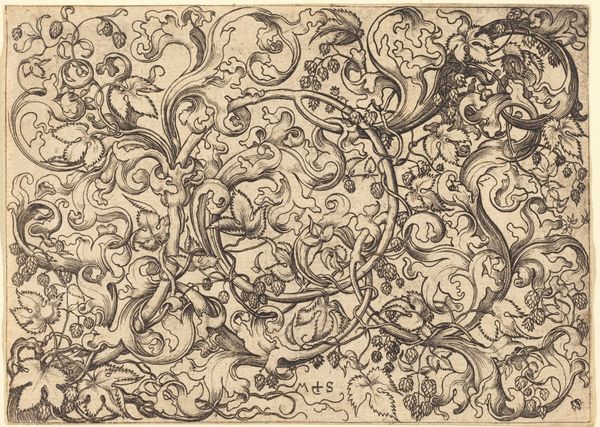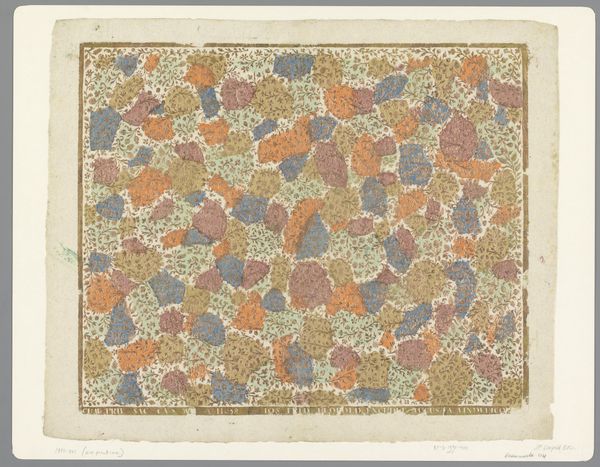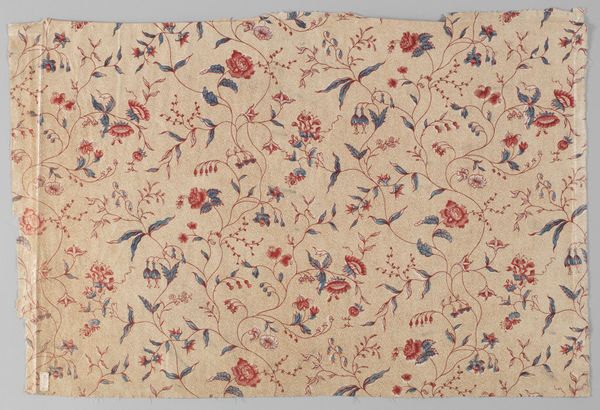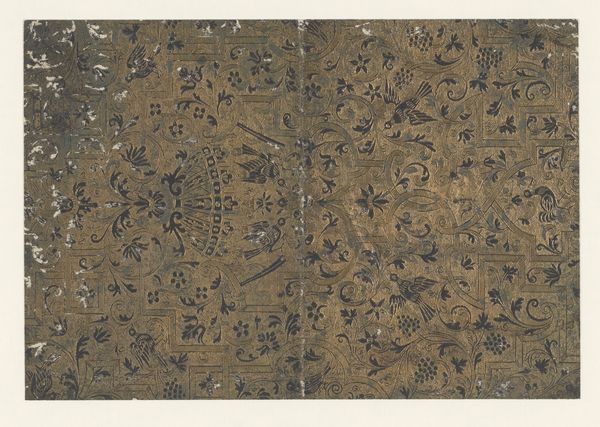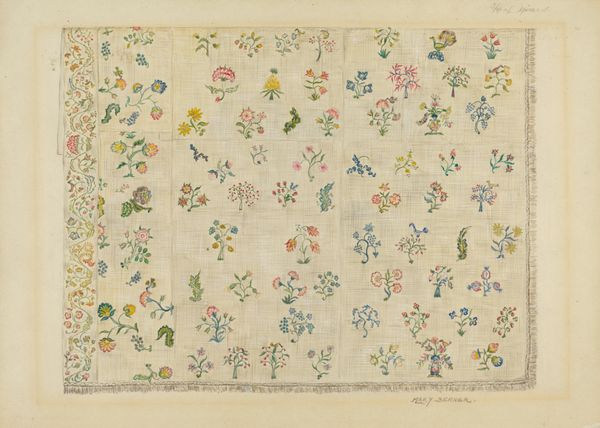
mixed-media, collage, paper
#
mixed-media
#
collage
#
water colours
#
baroque
#
paper
#
decorative-art
Dimensions: height 252 mm, width 325 mm, thickness 13 mm, width 654 mm
Copyright: Rijks Museum: Open Domain
Curator: This object is "Album met landschappen van Jacques Rigaud," dating from about 1700 to 1725. It’s currently housed here at the Rijksmuseum, employing a mix of media, including watercolor, collage, and paper. Editor: Initially, the marbled effect feels like looking at the earth from above, perhaps through a cloudy lens. The swirls of color—blues, yellows, and reds—give it an almost chaotic energy. Curator: That's an interesting interpretation. We should consider the context: Rigaud's album likely served the aristocratic class. Marbling in this period speaks to broader social and economic forces related to consumption and artistry of landscape at the time. What imagery and archetypes of power are these landcapes subtly reinforcing? Editor: The marbled paper itself acts as a sort of symbolic skin. It seems intentionally chosen to evoke natural patterns, reminiscent of the terrains and topography aristocratic landowners might wish to contemplate or project power upon. Curator: Indeed. Beyond surface aesthetics, let's dive into the very concept of landscape in Rigaud’s era. How did societal views on land ownership, and ideas of nationhood and belonging shape the landscapes he chose to depict? Were they symbols of dominion and territorial control, legitimizing power dynamics through pictorial representation? Editor: It becomes this fascinating interplay of nature as decorative motif and as territory ripe for control. One sees swirling colors not merely as patterns, but as topographical maps, and each shade bears emotional weight and invokes powerful memories about that historical period. Curator: Absolutely. Moreover, analyzing the materials themselves allows for contemplation on the album's use and circulation. Its accessibility reflects privilege, begging the question: How did this album function as a means of cultivating elite identities or justifying existing socio-economic orders? Editor: I now observe a constant dance between natural symbol and social commentary, intertwining human perspective with a sense of timeless grandeur. Rigaud's landscapes, mediated by marbling and binding, transform into a reflective artifact, allowing contemplation of both outward appearance and profound cultural stories about privilege and territorial dominion. Curator: Indeed, thinking about this artifact today invites us to consider what symbolic value it holds in an era defined by different geopolitical configurations, climate crisis, and discussions around post-colonial geographies. Editor: Reflecting on it now has left me marveling how a decorative item may contain complex symbols and provoke conversations, both visceral and intellectual.
Comments
No comments
Be the first to comment and join the conversation on the ultimate creative platform.
